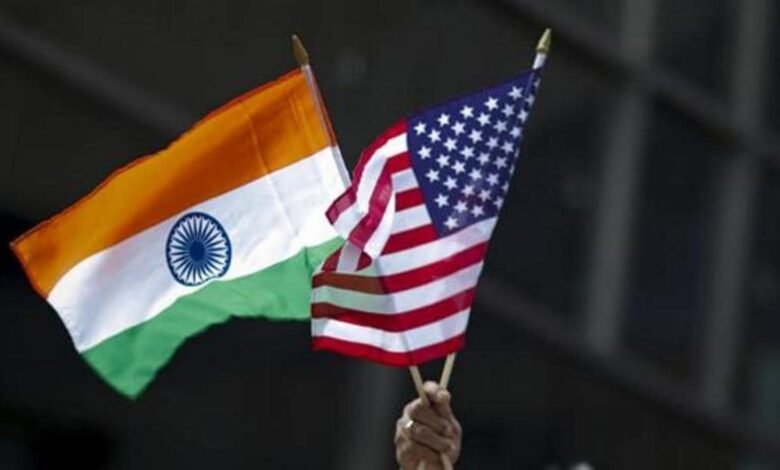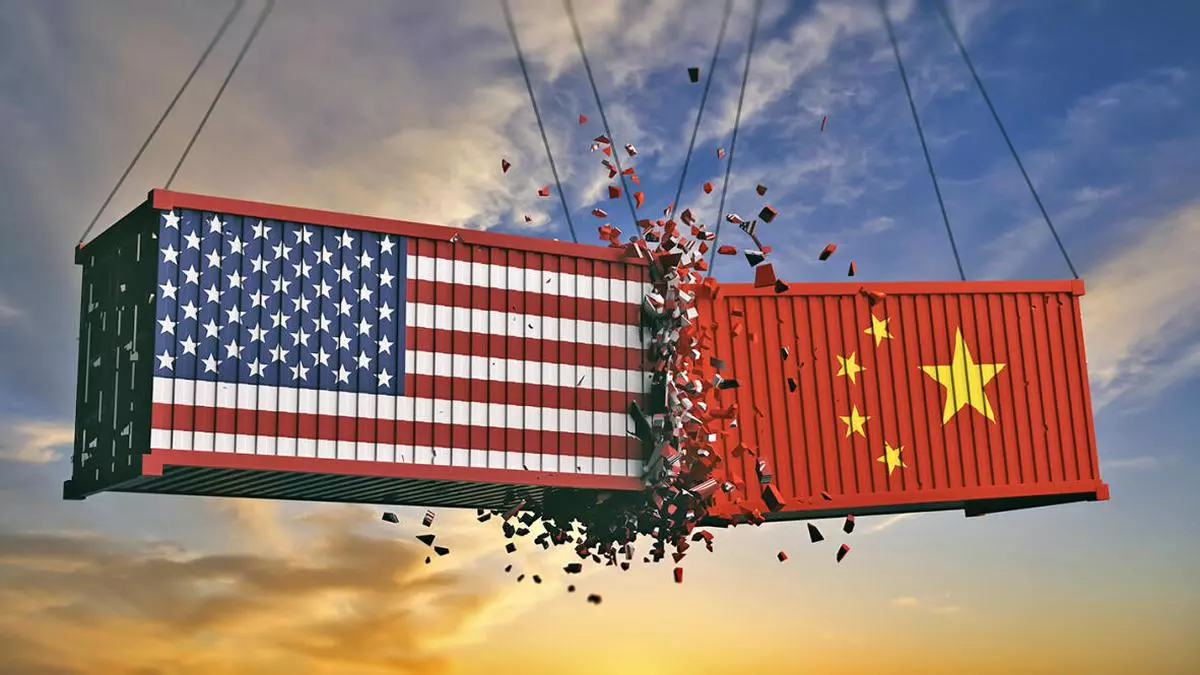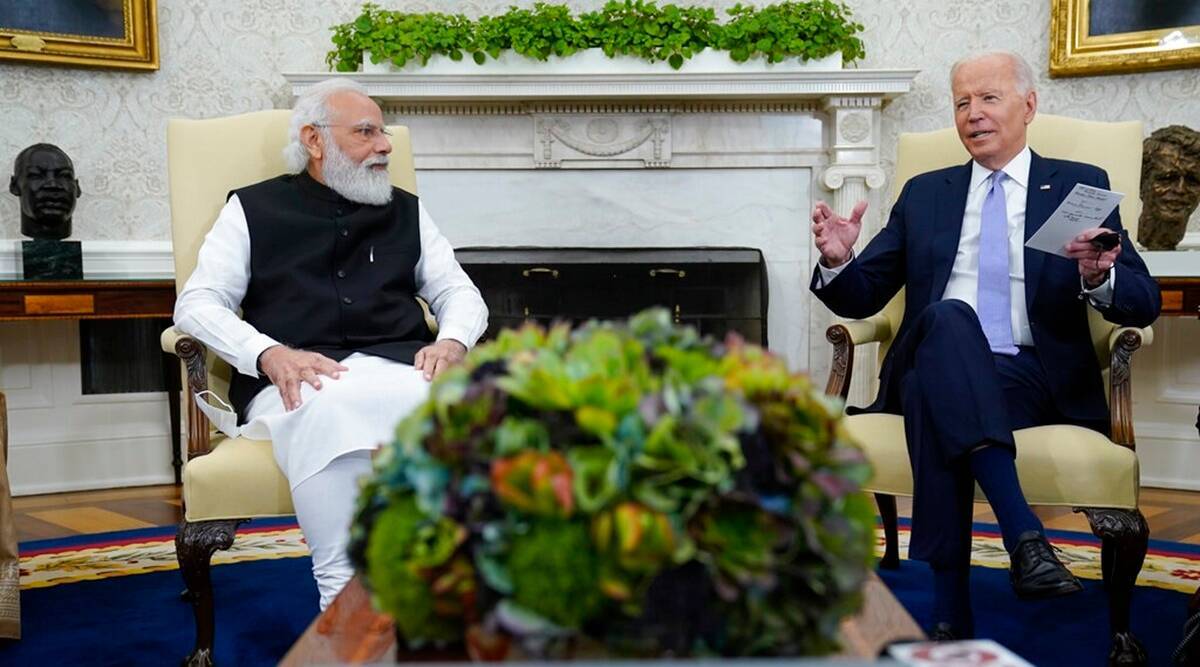The US has become India’s Biggest Trading partner, surpassing China 2022.

The US has become India’s Biggest Trading partner, surpassing China 2022.
In 2021-22, the US eclipsed China to be India’s biggest trading partner, boosting economic relations between the two nations. According to figures from the commerce ministry, international trade between the United States and India was $119.42 billion in 2021-22, up from $80.51 billion in 2020-21.
According to the research, India‘s two-way trade with China was $115.42 billion in 2021-22, up from $86.4 billion in 2020-21.

Last fiscal year, exports to China climbed modestly to $21.25 billion, up from $21.18 billion in 2020-21, while demand rose to $94.16 billion, up from $65.21 billion in 2020-21. In 2021-22, the trade deficit grew to $72.91 billion, up from $44 billion the prior fiscal year.
According to trade experts, increased bilateral commerce with the United States is expected to continue in the future years as New Delhi and Washington work to enhance their economic ties.
Vice President of the Federation of Indian Export Organizations, Khalid Khan, said India is establishing itself because as a reliable commercial partner. Global corporations are broadening their supply chains to include nations like India in order to reduce their reliance on China.
“The bilateral commerce between India and the United States will continue to expand in the future years. India has joined a US-led effort to establish an Indo-Pacific Economic Framework (IPEF), which will strengthen economic ties even more, “Khan stated in his opinion.
Rakesh Mohan Joshi, Director of the Indian Institute of Plantation Management (IIPM), Bangalore, agreed, saying that India, with its 1.39 billion people and the world’s third-largest consumer market and fastest-growing market economy, offers big opportunities for technology transfer, manufacturing, trade, and investment for US and Indian companies.

“Polished petroleum diamonds, medical drugs, jewelry, light oils and petroleum, frozen shrimp, made-ups, and other items are major exports from India to the United States, whereas major imports from the United States are petroleum, rough diamonds, liquefied natural gas, gold, coal, end up wasting and scrap, almonds, and other items,” Joshi said.
One of the few countries in India with a trade surplus is the United States. India has a $32.8 billion trade surplus with the United States in 2021-22. According to the data, from 2013-14 to 2017-18 and 2020-21, China was India’s largest trading partner. Before China, the UAE was the UAE’s most important commercial partner.
With $72.9 billion in trade, the UAE was India’s third-largest trading partner in 2021-22. Saudi Arabia ($42.85 billion), Iraq ($34.33 billion), and Singapore ($30 billion) came in second and third, respectively.
Last fiscal year, exports to China climbed modestly to $21.25 billion, up from $21.18 billion in 2020-21, while imports rose to $94.16 billion, up from $65.21 billion in 2020-21. In 2021-22, the trade deficit grew to $72.91 billion, up from $44 billion in the previous fiscal year. According to trade experts, increased bilateral commerce with the United States is expected to continue in the future years as New Delhi and Washington work to enhance their economic ties. Vice President of the Federation of Indian Export Organizations, Khalid Khan, said India is establishing itself as a reliable commercial partner. Global corporations are broadening their supply chains to include nations like India to reduce their reliance on China.

The bilateral commerce between India and the United States will continue to expand in the future years. India has joined a US-led effort to establish an Indo-Pacific Economic Framework, which will assist in strengthening economic ties even further. One of the few nations in India with a trade surplus is America. India has a $32.8 billion trade surplus with the United States in 2021-22.
In 2020-21, the United States was India’s top export destination and second-largest trading partner. Even though US exports to India were marginally lower than imports from the country last year, India remained in US’s top 15 export customers. US Trade Representative Katherine Tai, who is visiting India for the first time, said the two nations’ trade relationship was a high priority for US President Joe Biden and her.
Of course, there are disputes due to competing interests and expectations. These issues arise because they are at various stages of growth and have different objectives. But, generally, always, the shared interests transcend the quirks.

Was there a substantial improvement in trade ties under Trump’s presidency?
When Donald Trump and Prime Minister Narendra Modi met, they seemed to get along famously well, but this did not translate into any big benefits for India. On the contrary, the Trump administration enacted a slew of trade restrictions. It imposed unilaterally punitive import taxes on steel and aluminum from India and other countries to preserve national security interests.
Trump also took away GSP privileges (zero-tariff exports) from Indian exporters of specific commodities and encouraged India to import more from the US to close the trade imbalance. Former US President George W. Bush attempted to enter into a Free Trade Agreement with India. Still, he was adamant in his appeal for market access for medical equipment, dairy, and agriculture products.

What is the position of the Biden administration on the Trump administration’s issues?
On the surface, the Biden administration appears to be more tolerant of India’s trade imbalance with the United States than the previous administration. However, it has not taken any steps to reverse Trump’s tough actions, like the introduction of steel import tariffs or the removal of GSP benefits. On the plus side, Biden is easing some of Trump’s work visa limitations, which will be beneficial to Indians.
The potential of the US Trade Representative negotiating with India on removing steel tariffs, as it did recently with the EU, cannot be ruled out. Both governments are focused on promoting the interests of the digital economy (by opposing data localization), e-commerce companies, pharmaceutical companies, and the agricultural and dairy sectors.
What is this relationship’s potential?
There is major room for exceeding in trade and investment ties, particularly in the trade conflict between the United States and China that began during Trump’s presidency. The significance of diversified supply chains has been highlighted by the Covid epidemic (beyond China).
While the United States Trade Representative recognized the sharing transformation, services, health-related commerce, and farming as possible development sectors, conventional exports like clothes, diamonds, jewelry, chemicals, computers, and equipment all have room to grow. India has reduced FDI barriers in practically all sectors, especially recently in the military, and there is room for collaboration in this field.




